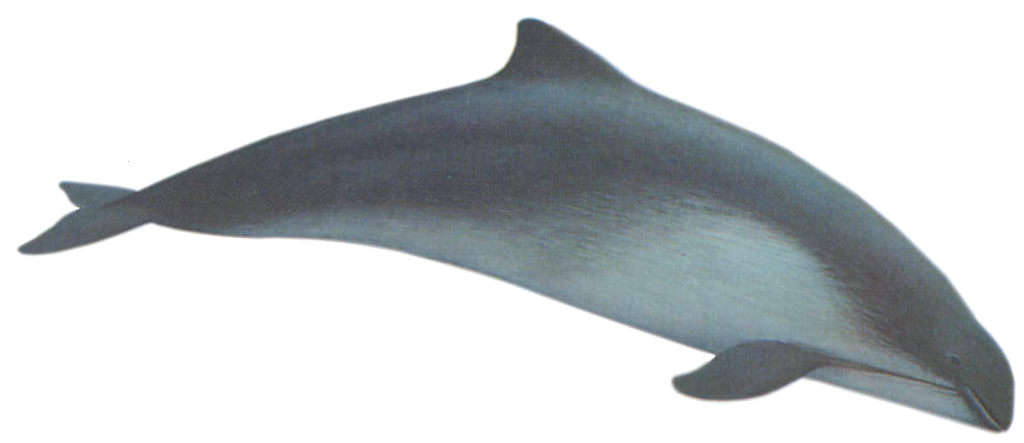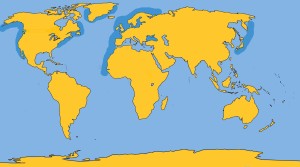Family: Phocoenidae
Genus: Phocoena
Species: P. phocoena (Linneaus, 1758)
As its alternative common name suggests (Common Porpoise), Phocoena phocoena is the most commonly seen of all porpoises. It swims at a maximum speed of 8 mph (13 knots) and will occasionally leap entirely clear of the water when breathing. It does not often approach ships, and rarely rides bow waves.
Taxonomic Note: Those harbor porpoises found in the Black Sea are occasionally given a separate classification of Phocoena phocoena relicta, an alleged subspecies. Another taxonomic name seldom used today but synonymous with Phocoena phocoena is Phocoena vomerina.
Physical Description: They have a very stocky body.
Color: Brown or dark gray dorsally, converging to a lighter gray at the flanks, often distinguished by a well-defined color change beginning just behind the forehead, running along the flanks, and ending at the tail stock. The flippers and flukes are dark with the flipper color extending from their leading margins to the corners of the mouth.
Fins and Flukes: The triangular dorsal fin is located on the mid-back region. The flippers are small, well rounded atthe tips and along the leading edges. The small thin flukes are extremely well-defined, and rounded at their tips, with a definite median notch.
Length and Weight: They reach a length of 6 ft (1.8 m) and about 200 lb (90 kg). The females are slightly larger than the males.
Teeth: They possess 23 to 28 small, spade-shaped teeth in each side of the upper jaw, and about 22 to 26 in each side of the lower jaw.
Feeding: Their known diet consists of herring, cod, sole, squid, and crustaceans.
Breathing and Diving: Harbor porpoises breathe about every 15 seconds and do not stay submerged for more than 3 to 4 minutes.
Mating and Breeding: Mating is generally believed to occur from March to July. A 30 in (76 cm) calf is born after a gestation period of 8 to 10 months. Sexual maturity is reached at 4 years of age. Females can give birth at 24 month intervals.
Herding: Usually they are seen in a pair or groups of 5 to 10; they may travel in herds of up to 100.
Distribution: They are found in the coastal waters of the North Atlantic from Delaware to Senegal, north to the Davis Strait, Iceland, and the White Sea; coastal waters of the North Pacific from Japan and Baja California to Point Barrow, Alaska.
Migration: To the northernmost part of their Atlantic distribution during summer, the southern part of their distribution in winter.
HARBOR PORPOISE DISTRIBUTION








